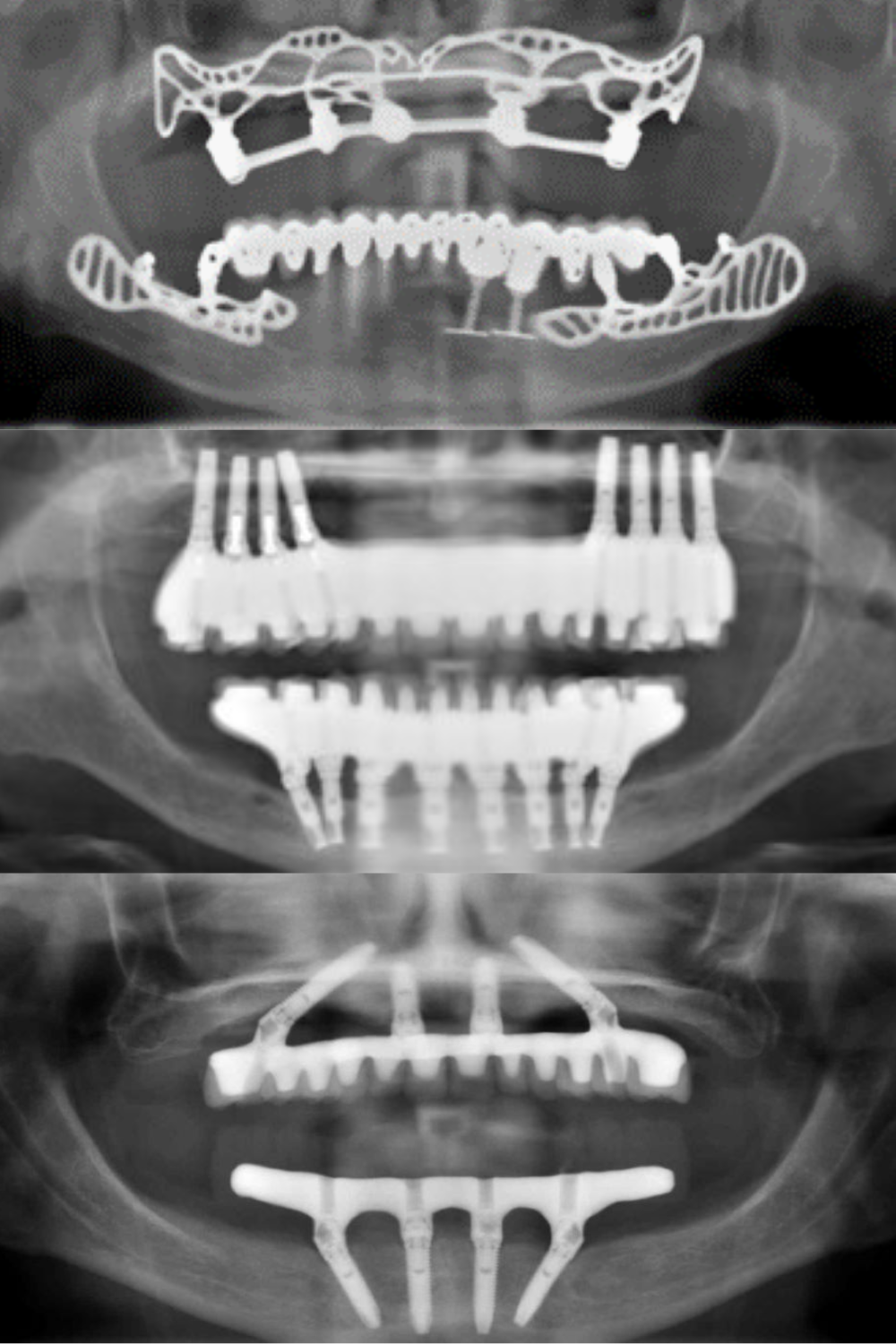Dental implants have the power to provide a new smile for people who have lost one tooth, multiple, or all of their teeth. Yet despite how effective and widely used they are, the evolution of dental implants has been a long road. Dental implants have existed in some form for thousands of years, yet the treatment’s greatest strides have all been relatively recent. In this article, Next Smile Australia takes a look at the role of All-on-4® in dental implant history and how this treatment has helped the field progress.
Pioneered by Dr Paulo Malo in 1998, the All-on-4® treatment represented a change of direction for dental implants. Traditionally, full-mouth dental restoration with dental implants involves inserting a series of dental implants into the jawbone one by one to replace the root of each lost tooth. All-on-4® rests an entire bridge of teeth on just four implants: two at the back and two at the front on either the upper or lower jawbone. All-on-4® can provide you with a set of new teeth on the same day as your dental implant surgery.
Dental implants were designed to fix the issue of missing teeth. Missing teeth cause a lot more problems than just a few gaps in your smile, from jawbone deterioration to difficulty eating to gum disease that spreads bacteria to other parts of the body. Dental implants put a stop to the damage that can otherwise slowly occur to your other teeth, the rest of your mouth and your entire body.
The History of Dental Implants
The history of dental implants is older and more surprising than many people may expect. In China, carved pegs of bamboo were used to replace missing teeth as early as 2000 BC. Other ancient relics of early forms of dental implants have also been found throughout history. An ancient Mayan woman from 600 AD was discovered with dental implants in her mouth made from seashells, and false teeth made from iron dated back to 300 BC have been uncovered in France.
In the eighteenth century, Pierre Fauchard, often called “the father of modern dentistry”, began to experiment with the materials used to make dental implants. Fauchard’s dedication to openness and scientific inquiry led to better dental standards across the board. While his approach took the field of dentistry to new heights, his experiments with different implant materials like gold and animal teeth didn’t yield particularly strong results.
In the early 1900s, Dr EJ Greenfield began to experiment with attaching iridium-platinum implants to gold crowns. The results were more positive, and his dental implants often lasted for several years, but bodily rejection still occurred often.
So, what was the turning point in dental implant history that laid the foundation for the results you can see at work today? It all relates to the discovery of osseointegration.
The Evolution of Full Mouth Dental Implants

The Beginning of the All-on-4® Treatment Process
The origins of dental implant history can be traced back to 1952 and the research of a young orthopaedic surgeon named Per Ingvar Branemark. Branemark was studying bone healing when he accidentally discovered the process of osseointegration, which is where a dental implant fuses with the jawbone. Osseointegration was discovered when Branemark placed a titanium cylinder onto the leg of a rabbit as a splint, only to find he could no longer remove it when he tried to. This led him to create the very first titanium dental implants. Branemark studied the process for years until finally, in 1978, after more than a decade of testing, he was able to integrate it into his own commercially available system.
Modern dental implants were born, and people who had missing teeth due to factors like injury, illness or genetic conditions no longer had to settle for gaps in their smile or ill-fitting dentures. Titanium dental implants are inserted into the jawbone to replace the roots of every tooth that’s missing, and an artificial tooth is affixed to the top to give the appearance of a natural tooth.
While the All-on-4® treatment concept is built on the foundations of Branemark's discovery of osseointegration, it varies from traditional individual dental implants. Originally referred to as full arch dental implants, All-on-4® was invented in 1998 and coined by Portuguese dentist Dr Paulo Malo. The treatment concept was then patented and registered with Nobel Biocare.
The innovation of All-on-4® began when Dr Malo realised that strategically placing four dental implants in the strongest bone available, angulating the implants to avoid sinus cavities and thin bone, was able to support an entire arch of teeth using the immediate loading technique. This was a turning point that marked the first appearance of All-on-4® in dental implant history. Dr Malo, sponsored by Nobel Biocare, carried out the first successful treatment with the All-on-4® technique in 1998. Since then, tens of thousands of patients have been successfully treated with the procedure.
Why All-on-4® is an Innovative Treatment Process
Unlike traditional dental implants, which can require a long process that takes months to recover from, All-on-4® is comparatively quick and simple. Instead of a dental implant for every missing tooth, All-on-4® rests an entire arch of teeth on just four implants in either the upper or lower jawbone. This shortens the dental implant process and the recovery time. Besides the important role of All-on-4® in dental implant history, this treatment also has some specific benefits of its own as well.
All-on-4® dental implants are specifically angled to target stronger areas of the jawbone. So even if missing teeth have caused a decline in the strength of your jawbone over the long term, you may still receive All-on-4® without bone grafting. The procedure has a 98% success rate and provides you with a brand-new smile in only 24 hours.
While All-on-4®’s role in dental implant history is well established, it’s important to choose a highly experienced provider that uses the most innovative techniques currently available and provides staff with the most advanced training.
Book a Consult with Next Smile Australia

Next Smile Australia uses ‘the Malo Protocol’, a two-stage process. The procedure involves a stage one provisional bridge to allow the osseointegration process to take place, followed by the fitting of a final bridge of your new teeth. The Malo Protocol has a track record of effective application* and is the most reliable way to deliver the All-on-4® treatment process.
Next Smile Australia dentists are trained extensively in Dr Malo’s techniques and are dedicated to the comfort and well-being of our patients. In addition to highly trained dentists, dental anaesthetists and support staff, we also have advanced technology and facilities that allow you to undergo your All-on-4® treatment in comfort. Our industry-leading and medically regulated Super Clinics include onsite dental laboratories and state-of-the-art surgical rooms. All of your appointments, from your initial consultation through to your surgery, will take place under the same roof, where our professionals have access to equipment like in-house X-rays and CBCT scanners.
If you have any questions, would like to attend an information session or want to arrange a personal consultation about All-on-4®, contact the Next Smile Australia team.